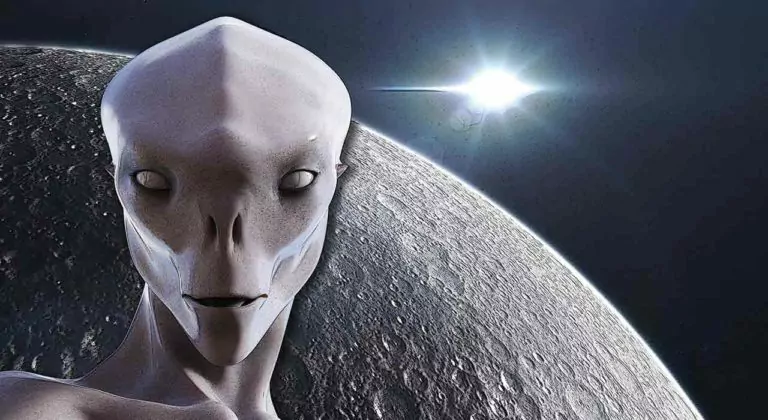You can download or listen to the podcast version (7 minutes) here.
*****
Back when I was studying history as a graduate student, one of my profs played us an episode from the CBC Radio program IDEAS. The radio show told about a strange malady that hit Upper Canada in the 1800s. People died of a sickness, later called Sarner’s Disease, and were promptly buried.
However, on one occasion a coffin was unearthed. The body inside was contorted and had clearly been clawing at the roof of the coffin, trying to get out. The person inside had been buried alive, or, at least, not fully dead.
The show went on to detail how people became reluctant to bury their relatives for fear they weren’t fully dead and so held off burying them. Fear of a public health crisis mounted, with the proliferation of dead and probably dead but unburied bodies. People started hiding bodies in the barn, under the dock, and anywhere they could find until they could be sure their loved one was fully dead. The program quoted professors from important universities, and gave a logical, comprehensive account of the strange malady of Sarner’s Disease.
As sophisticated graduate students in history, the class drank it all in…until the very last sentence of the program which started out “This work of fiction has been created for the CBC by…”
You could have heard a pin drop. We had been duped. Our prof had schooled us and given us a good lesson in critical thinking, and, frankly, not believing everything you hear. Nowadays, we’d call that fake news – a story that’s told so convincingly that it’s possible to believe it, even though it’s simply made up nonsense.
Somehow we have the idea that fake news is something new. The Russians have been taking over Facebook or Twitter, or the leftwing media is withholding information in order to make the President look bad. Maybe, maybe not. But if fake news is out there, it’s certainly not new. PT Barnum supposedly claimed, “there’s a sucker born every minute” and he might have had something there.
Batman on the moon?
In August of 1835 the New York Sun published a series of six articles about recent astronomical discoveries made by the noted astronomer John Herschel. The articles were initially billed as being reprinted from the Edinburgh Courant. The Sun related how Herschel had taken an enormous telescope from Britain to South Africa to do his observations. The weight of the lens was reported as 6,700 kilograms, and the magnification power was 42,000 times! The lens was said to be 24 feet wide. Since high power telescopes have trouble with proper illumination, a second “hydro-oxygen microscope” lens illuminated the view. It was a truly magnificent toy for an astronomer. And to give it more credibility, a scholarly journal was now said to be the source of the articles – the Edinburgh Journal of Science – and it said that Herschel had found planets around far away stars
Tales far more fantastic than these would come out of these stories. When the telescope was focused on the moon, life was discovered. There were flowers, and forests full of food and animals including some animals resembling goats and bison. There was a beaver-like creature that walked on its hind legs and carried its young in its arms.
The most fantastic thing of all was a sort of creature that appeared to have wings attached to its back – a kind of bat-man if you will. This creature was seen in what appeared to be conversation with other bat-beings, suggesting the creatures were intelligent and capable of higher thought.
Ultimately there had been no further story to tell. This was because, thoughtlessly, the astronomer had left his telescope set up in such a way that it caught the sun’s rays during the day. With a magnification of 42,000 times, the observatory that housed the telescope was quickly ablaze and everything in it was destroyed, the telescope included.
People were fascinated with the tale and reprint after reprint of the Sun was made. Briefly it was the best selling newspaper in the entire world. Newspapers all over the world reprinted the article because everyone wanted to know about the newly discovered moon creatures. The articles were reprinted in pamphlet form and in weeks sold 60,000 copies. Even the New York Times described the story as “plausible and probable.”
Falling for fake news because we want to?
There was just enough truth there to get people going. Herschel was a real astronomer. And he really had gone to the Cape of Good Hope to study the skies. The Edinburgh Courant was a real paper, as was the Edinburgh Journal of Science.
Unfortunately, Herschel was not the author of the articles and hadn’t even heard about them before they were published. The Journal of Science, while real, had gone out of print several years earlier. As for the Courant, it too was real, but it had been defunct for over 100 years. As for the telescope, what’s a hydro-oxygen microscope lens anyway?
So why did people fall for it, hook, line and sinker? Maybe because they really wanted to. Science was making great strides and people were prepared to believe all sorts of incredible things in the name of science. Religion was taking a beating, and many people felt their faith shaken by a science that often insisted God was irrelevant. We needed a place to belong, and someone to belong with, and if not a higher power why not bat-people?
But in case you think this was an isolated incident, don’t forget how a 1930s radio play – one hundred years later – of HG Wells War of the Worlds convinced people we were being invaded by Martians. They believed it despite the radio program repeatedly reminding listeners that it was only a story. Alone in the universe, we feared the bogeymen of the night.
Whatever the reason, there’s always been fake news and there always will be. We devour it ravenously because the creators of fake news have learned to do the one other thing Barnum supposedly advised: Always leave them wanting more.
This article is taken from an episode of James Dykstra’s History.icu podcast, where history is never boring. You can check out other episodes at History.icu or on Spotify, Google podcasts, or wherever you find your podcasts.
To dig a little deeper see:
EarthSky.org’s “Would you have believed the Great Moon Hoax?”
Hoaxes.org’s “The Great Moon Hoax”
JSTOR Daily’s “How the Sun conned the world with “The Great Moon Hoax”
The Irish Times’ “The Great Moon Hoax”
The Smithsonian Magazine on “The Great Moon Hoax was simply a sign of its time”
Wikipedia on”The Great Moon Hoax“











